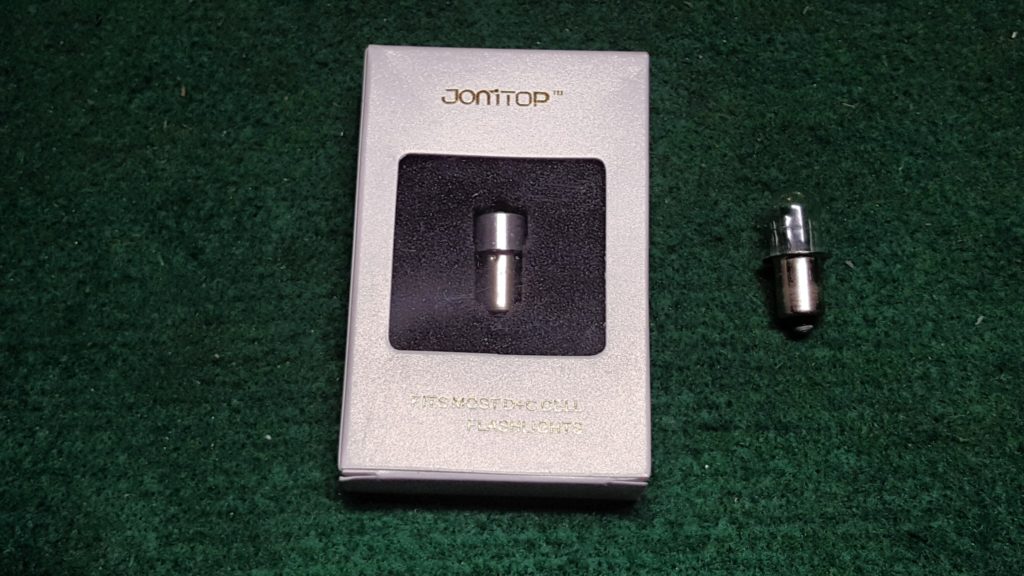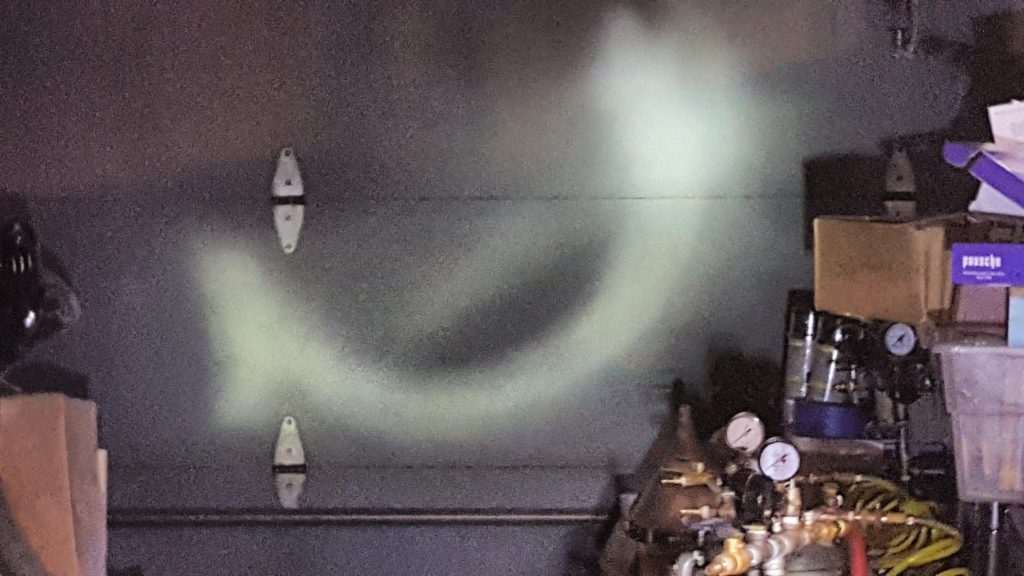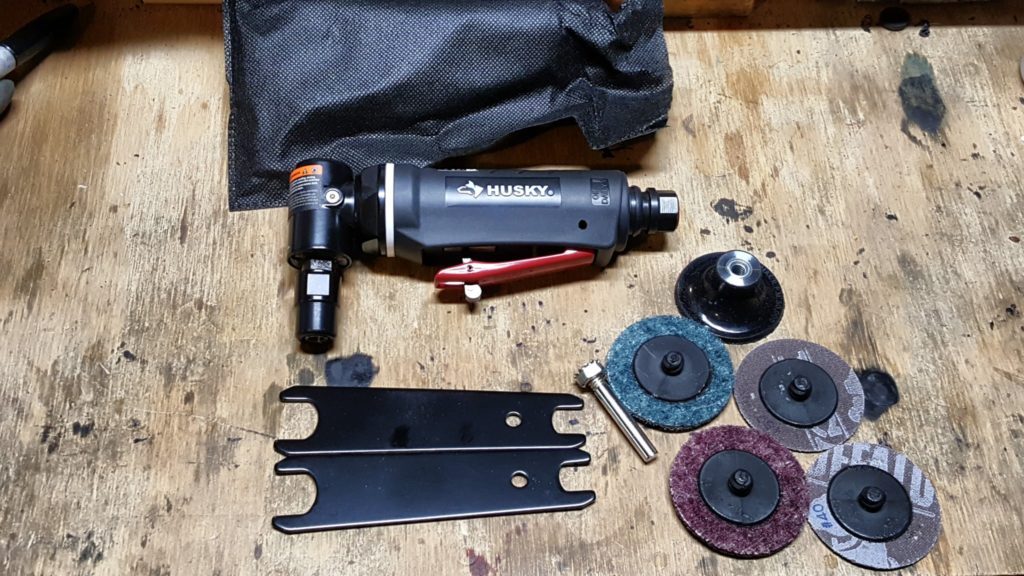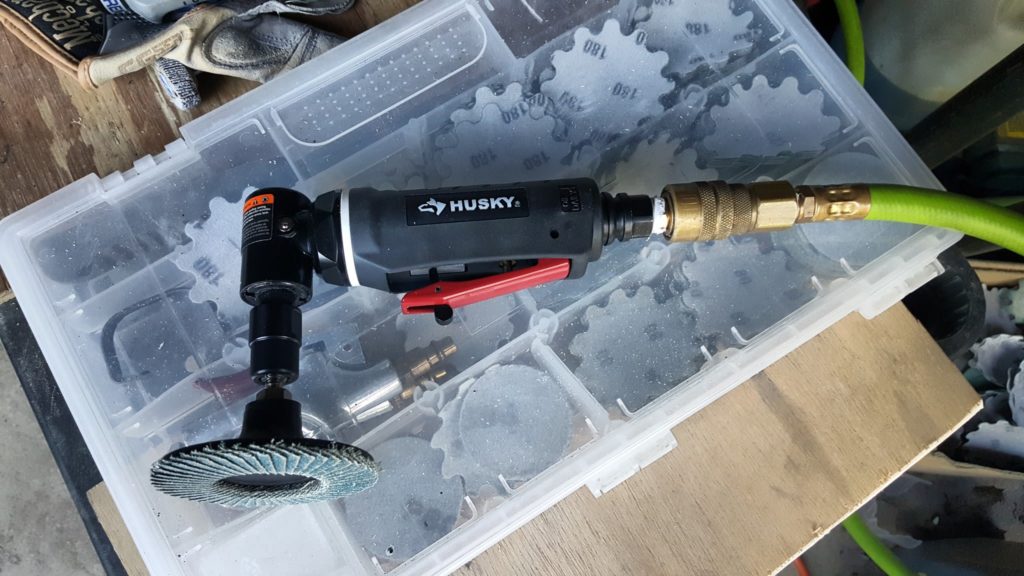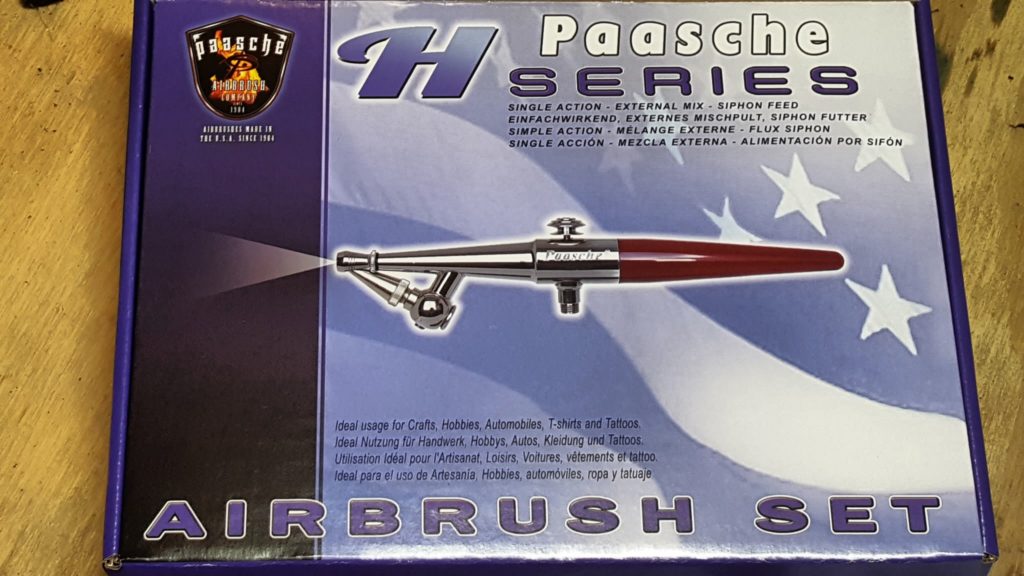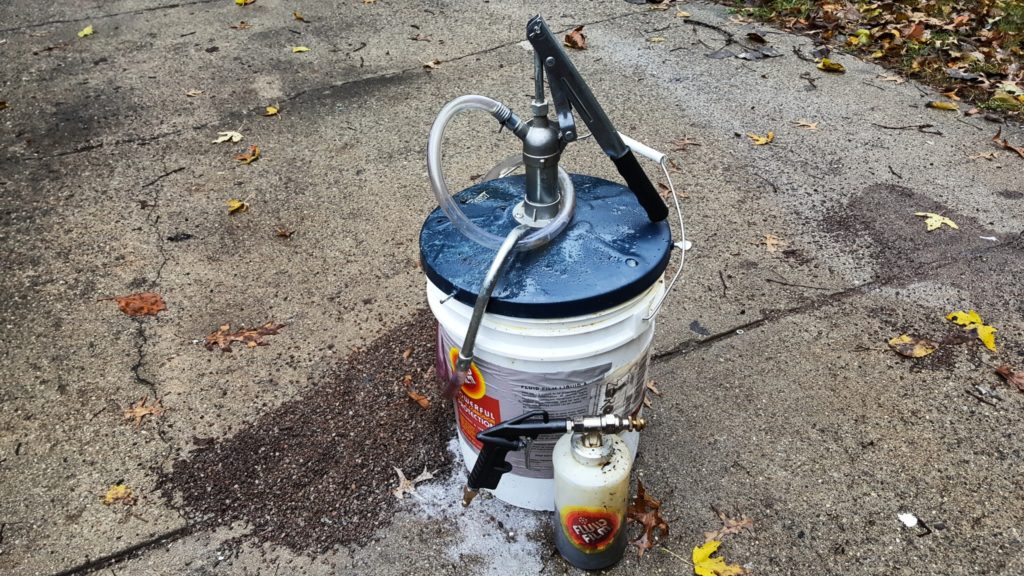Well folks, I recently needed to install some molding at my mother in law’s and realized I no longer have a small compressor to run my air nailers at a remote site. So, I recalled an article I had read that spoke well of the Ryobi Airstrike 18ga brad nailer.
The interesting twist on this nailer is that it uses an 18 volt One+ battery to operate and you don’t need a compressor or air lines. I have a ton of Ryobi tools and decided to pick up just the tool for $129.99.
I read the manual and the tool has both an air pressure adjustment and a depth adjustment. In the next photo, the silver dial on the top adjusts the air pressure and depth is down towards the nose. You’ll notice I have one of the slim low-profile lithium batteries on it.
It came with 200 1-1/4″ brads and they look just like the ones I use in my air brad nailer so I have plenty for the future. They load in the magazine just like other nailers.
Now, I definitely would recommend practicing some with this. The balance is fairly good but what is really different is the way it cycles when you pull the trigger. There is a split second delay as it builds up pressure and then it fires the hammer driving the brad forward. For me, the delay took some getting used to. We’re not talking very long at all but I’m used to bang-bang-bang-bang with an air nailer as fast as you can pull the trigger. Here there is just enough pause to throw you off. I found myself pulling the trigger and lifting to fast so I needed to make my self slow down, pull the trigger, let it cycle and then pull.
What I was installing was some of that cheap paper/fiber molding so it was very easy for the nailer to drive the brads in. I really should have dialed the pressure back a bit and/or reduced the depth. That will take further experimenting for me to learn the right combo.
All in all after driving about 30 brads, I am happy and would recommend the unit to someone who is interested in going cordless.
Note, I would consider a bigger nailer if I needed it down the road but most of the time I am close enough to my shop that I can run an airline to my big compressor. The reviews are mixed on the big nailer as it uses a relatively oddball sized nail and I’m hoping they change that.
If you are thinking of buying one of the brad nailers, they are on Amazon but you will pay a premium. Either get them at your local Home Depot store or buy them online:
Just the tool – click here.
The tool, battery and charger – click here.
Update 10/4/2018: I used this while remodeling my mother-in-law’s house and did not have one problem. I was driving between 1″ to 1-1/4″ 18ga nails through paneling, baseboards and door moldings. Not one jam, misfire, light strike, etc. I’m very pleased with the tool. Like many things, I just had to get used to it.
2/27/20 Update: Used this to tack up some wood. This thing is so handy when you don’t have a compressor handy.
If you find this post useful, please share the link on Facebook, with your friends, etc. Your support is much appreciated and if you have any feedback, please email me at in**@*********ps.com. Please note that for links to other websites, we are only paid if there is an affiliate program such as Avantlink, Impact, Amazon and eBay and only if you purchase something. If you’d like to directly contribute towards our continued reporting, please visit our funding page.
















